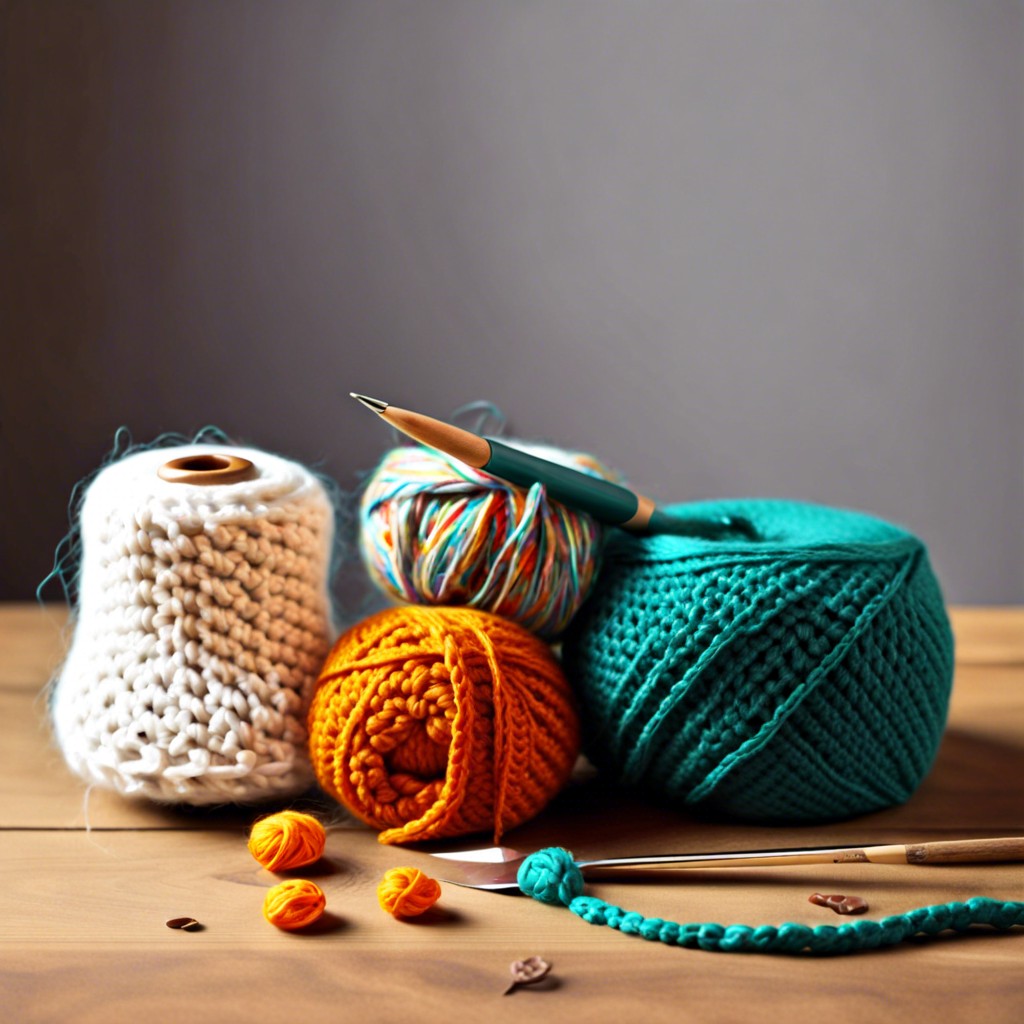Learn effective methods to shrink your crochet projects without turning them into doll-sized disasters.
Got a crochet project that’s turned out more elephant-sized than you imagined? Fear not! From yarn types to washing techniques, this guide will walk you through the magical (and sometimes mysterious) art of crochet shrinkage. Say goodbye to oversized sweaters and hello to perfectly-fitted coziness. We’ll dive into every detail, so you’re in the right spot to learn all the tricks. Ready to shrink your masterpiece? Let’s get to it!
Key takeaways:
- Yarn types affect shrinkage: natural fibers shrink more.
- Consider fiber type, stitch type, temperature, agitation, and drying method.
- Use the washing machine: hot water, heavy-duty cycle, air dry.
- Shrink by hand: soak in hot water, gently squeeze, shape, and air dry.
- Take before and after photos; size reduction and color changes may vary.
Why Shrink Crochet?

Maybe that lovely sweater you made for Aunt Mildred turned out more ‘tent’ than ‘tailored’. Or perhaps you found a vintage crochet shawl that’s more ‘granny’ than ‘graceful’ and needs a trim. Shrinking crochet can be a lifesaver for many yarn enthusiasts.
Sometimes yarn stretches after a few washes, giving you less “fitting like a glove” and more “sack of potatoes” vibes. Or maybe that gauge went rogue mid-project, leaving you with a slightly oversized dilemma.
Want your crochet pieces to look stellar on you? Regular-sized but just a bit snugger can turn a floppy hat into a fashion statement or transform overly-long sleeves into perfectly cozy cuffs.
So, whether it’s for aesthetics, a better fit, or saving that misguided, post-enthusiasm project, shrinking crochet could be just what your yarn ordered.
Yarn Types
Yarn is like the secret sauce in your grandma’s famous recipe – it makes all the difference! Natural fibers like wool and cotton are more prone to shrinkage. Wool, the drama queen of yarns, contracts when exposed to heat and moisture. Cotton, on the other hand, shrinks but tends to settle down after the first wash.
Synthetic fibers like acrylic and polyester are the rebels. They resist shrinking, often stubbornly maintaining their original size despite your best efforts. Blended yarns, a mix of natural and synthetic fibers, play it cool and may shrink slightly, depending on their dominant fiber.
Always check the yarn label. Some yarns come with a built-in instruction manual on how they behave under pressure. Milk a lot out of that tiny label – it’s like the yarn whisperer.
Shrinkage Factors
Think of yarn like a diva—it has demands! Different fibers shrink differently. Cotton loves to tighten up, while acrylic needs a stern talking-to. Wool, on the other hand, might just decide to go all “Cozy Hobbit.” Here’s what to consider:
Fiber Type: Natural fibers like cotton and wool are more prone to shrinkage. Synthetic fibers, not so much.
Stitch Type: Looser stitches will shrink more noticeably than those tight little soldiers.
Temperature: Hot water will make those yarn fibers contract faster than a cat spotting a cucumber.
Agitation: The more you stir that washing machine, the more your crochet wants to curl up and get smaller.
Drying Method: Toss it in the dryer, and you’re playing with shrinkage fire. Lay it flat, and it might behave.
Armed with this knowledge, you can predict and control shrinkage better than a laundry mishap maestro.
How to Shrink Crochet in the Washing Machine
Plan a hot date for your crochet project with your washing machine. Be warned, though – it might come out looking a little different.
First up, set your washing machine to the hottest water setting possible. Like a tropical vacation for your yarn. Toss in your crochet piece, and throw in a couple towels or jeans for friction. Time to create some sudsy chaos.
Choose a heavy-duty cycle. The more agitation, the better. Think of it as a yarn rollercoaster.
Use some detergent to help with the shrinking process, but don’t go overboard. You don’t want a bubble party in the laundry room.
After the wash cycle, check the size. If it hasn’t shrunk enough, repeat the process. But don’t overdo it – remember, we’re shrinking crochet, not reinventing it as a tiny coaster.
Finally, air dry to avoid any further shrinkage. Unless you’re aiming to clothe an army of sock puppets.
How to Shrink Crochet By Hand
Grab your crochet piece, a basin, and some hot water. Ready? Let’s dive in!
First, fill the basin with hot water. Not boiling—you’re not making pasta here—just hot enough to give your yarn a little shock.
Submerge your crochet item and let it soak for about 10-15 minutes. This luxury spa treatment will help relax the fibers.
After its hot soak, take it out and gently squeeze. No wringing—unless you want to turn your precious work into a scrunched mess.
Lay it flat on a clean towel and roll it up to remove excess water. Imagine you’re rolling sushi, but with less rice and more yarn.
Now for the fun part: manipulating the shape. Tug and tweak your piece gently to encourage shrinkage. Want it narrower? Pull the sides in. Shorter? Give the ends a little love squeeze.
Leave it lying flat to dry completely. Tossing it in the dryer might result in excessive, unpredictable shrinkage. Slow and steady wins this race.
Voilà! Your crochet wardrobe just had a minor shrink-a-vention.
Before and After
To appreciate your hard work, take a “before” photo of your crochet item. After you’ve put your piece through its dramatic washing machine escape room or a gentle hand-shrink bath, snap an “after” photo.
Keep in mind:
Items can shrink unevenly. Sometimes, it’s a wild ride.
Colors might deepen because the fibers tighten. Your pastel might just have turned into a bold statement piece.
Size reduction can vary. That scarf might look less like a hug and more like a handshake, but hey, it’s still cozy!
Remember, shrinking is a bit like cooking without measurements—fun, experimental, and occasionally surprising!





